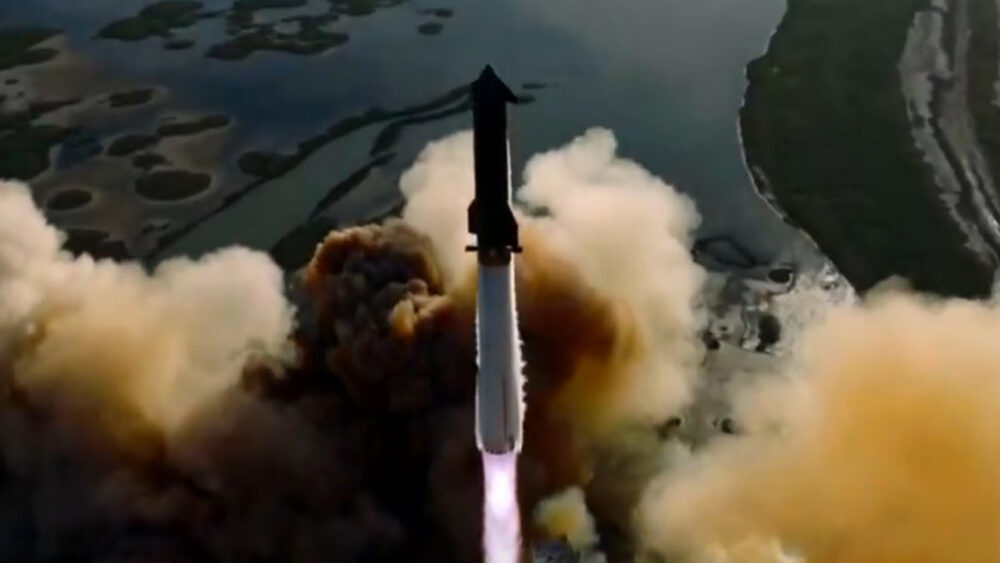On Monday, SpaceX achieved a major milestone with its Starship program, successfully launching its eleventh test flight from its Starbase facility in Boca Chica, Texas.
The launch officially took off around 6:23 p.m. CT — marking the next big step in Elon Musk’s long-term plan to develop a reusable rocket capable of carrying humans to the Moon and eventually Mars.
Elon Musk’s SpaceX launches its 11th Starship rocket from Starbase, Texas, a test mission to demonstrate the giant vehicle’s reusable design for lofting satellites and eventually taking humans to the moon and Mars https://t.co/tdIFzF5y6B pic.twitter.com/lC5dER8NWQ
— Reuters (@Reuters) October 14, 2025
Monday’s mission follows the success of SpaceX’s “Flight 10” in late August, as previously reported by The Dallas Express, which achieved several key research goals. Those included deeper analysis of “offshore landings” in the Gulf of America and data collection on “in-orbit engine relights.”
With Flight 11, SpaceX engineers aimed to expand on those results, introducing new tests that pushed the performance and durability of both the Super Heavy booster and the Starship’s outer frame.
A live webcast began about 30 minutes before liftoff on SpaceX’s website and X account. Many Texans reported seeing the rocket streak across the evening sky from their own backyards.
DX’s Carlos Turcios posted a video of the rocket mid-flight, writing, “The sonic booms were SO INTENSE that buildings and glass SHOOK from tremors.”
One of the main focuses of the mission was improving the Starship’s heatshield system and studying how its outer body responds to extreme atmospheric changes.
According to SpaceX, engineers intentionally removed a small number of heatshield tiles in high-stress areas to study how the vehicle’s stainless-steel body handles intense heat and friction during atmospheric reentry. The test aimed to identify weak points in the spacecraft’s thermal protection system before future crewed missions to the Moon or Mars.
During its descent, the Starship performed a series of complex maneuvers, including a controlled flip and guided burns, before splashing down in the Indian Ocean as planned. While the flight did not include an attempt to catch the vehicle at the launch tower, the sequence simulated many of the same movements required for future land-based recoveries.
The rocket came back from space at hypersonic speed and then hovered at a precise position https://t.co/Bzc9rz5htj
— Elon Musk (@elonmusk) October 14, 2025
The Super Heavy booster also underwent a landing test, touching down separately in the Gulf of America as planned. SpaceX engineers used the data to analyze engine performance, flight stability, and shutdown transitions in real time, which are crucial for improving reliability and reusability.
The Starship also deployed eight simulated Starlink payloads designed to burn up safely during reentry.
SpaceX coordinated closely with the FAA and air traffic regulators to minimize disruptions during the launch. During Flight 10, airspace was reopened in less than nine minutes with no commercial flight delays, a record the company aimed to replicate Monday.
Starship remains the centerpiece of Musk’s vision to make space travel affordable, sustainable, and fully reusable.
The massive stainless-steel rocket is designed to carry over 100 tons of cargo into orbit, refuel in space, and, according to SpaceX, enable future missions to Mars. Each test flight, including this one, generates a wealth of critical data that brings SpaceX closer to achieving that goal.
Monday’s successful launch of Starship marked another major step toward proving that the era of fully reusable, interplanetary rockets is within reach.
Musk continues to have his eyes set on Mars, both for spaceflight and future business ambitions.
“𝕏 is going to be the biggest social media platform on planet Earth, and soon on Mars,” Musk posted Monday morning.


